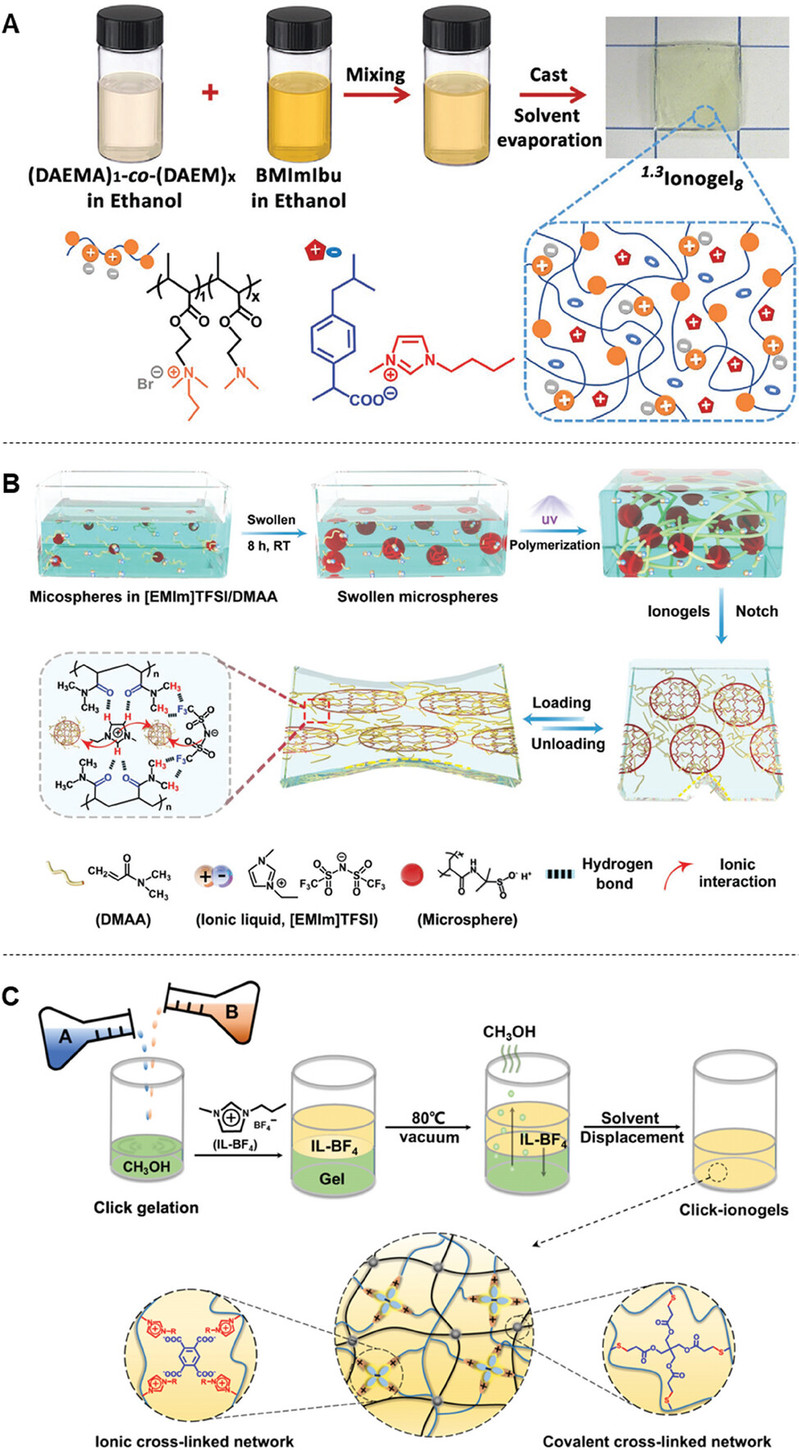Ionogels: Preparation, Properties and Applications
Chang-Cun Yan1(闫长存), Weizheng Li1, Ziyang Liu1, Sijie Zheng1, Yin Hu1, Yingjie Zhou2, Jiangna Guo, Xu Ou2, Qingning Li1, Jiangtao Yu1, Legeng Li2, Mingchen Yang1, Qinbo Liu2, Feng Yan1,2*(严锋)
1Key Laboratory of Organic Synthesis of Jiangsu Province, College of Chemistry, Chemical Engineering and Materials Science, Dushu Lake Campus, Soochow University, Suzhou215123, People’s Republic of China
2School of Chemistry and Life Science, Suzhou University of Science and Technology, Suzhou 215009, People’s Republic of China
Adv. Funct. Mater. 2024, 34, 2314408
Abstract: Ionogels, composed of ionic liquids and supporting networks, possess a plethora of exceptional properties, including nonvolatility, remarkable thermal and electrochemical stability, elevated mechanical strength, as well as outstanding ionic conductivity. Based on these extraordinary characteristics, ionogels have found extensive applications in diverse fields encompassing functional materials, sensors, soft electronics, solid electrolytes, and biomedicine. In recent years, ionogels have witnessed significant advancements and emerged as a highly popular subject matter. Consequently, this review provides a comprehensive overview of the latest progress made in the realm of ionogels. The preparation methods of ionogels are initially introduced following a concise introduction. Subsequently, the properties of ionogels, encompassing mechanical properties, high and low temperature resistance, ionic conductivity, stimuli-response properties, self-healing properties, recyclability and their structure-property relationships, are comprehensively discussed. Moreover, recent advancements in the utilization of ionogels in solid electrolytes, ionic skins, soft electronics, adhesions and other domains are also elaborated upon extensively. Finally, after a succinct summary, challenges and prospects regarding the future development of ionogels are thoroughly deliberated.

链接://onlinelibrary.wiley.com/doi/10.1002/adfm.202314408